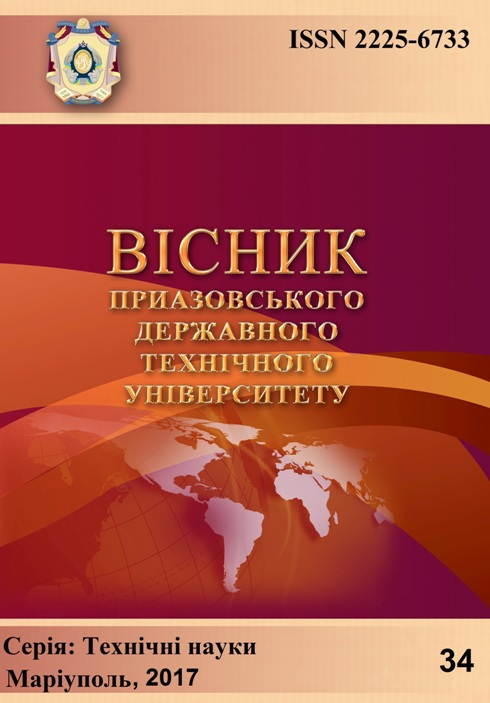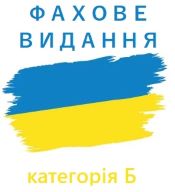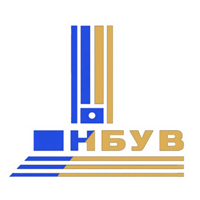Вдосконалення технології наплавлення стрічковим електродом
DOI:
https://doi.org/10.31498/2225-6733.34.2017.105594Ключові слова:
дугове наплавлення, стрічковий електрод, короткі замикання, якість наплавленого шару, дефекти наплавленняАнотація
Вивчена поведінка дуги на торці стрічкового електроду. Показано, що переміщення дуги по торцю здійснюється за рахунок періодичних коротких замикань дугового проміжку. При цьому нова дуга збуджується в точці короткого замикання. Це призводить до збільшення вірогідності формування дефектів в наплавленому шарі зміцнених виробів. Запропоновано фіксувати моменти коротких замикань електроду на основний метал і в ці моменти здійснювати розряди заздалегідь зарядженого конденсатора, підключаючи його між електродом і виробом. Для реалізації цих дій розроблено спеціальне автоматизоване устаткуванняПосилання
Список використаних джерел (ГОСТ):
Кравцов Т.Г. Электродуговая наплавка электродной лентой / Т.Г. Кравцов. – М. : Машиностроение, 1978. – 168 с.
Гулаков С.В. Наплавка под флюсом ленточным электродом / С.В. Гулаков, В.Н. Матвиенко, Б.И. Носовский. – Мариуполь : ПГТУ, 2006. – 136 с.
Размышляев А.Д. Автоматическая электродуговая наплавка ленточным электродом под флюсом / А.Д. Размышляев. – Мариуполь : ГВУЗ «ПГТУ», 2013. – 180 с.
Eichhorn F. Grundlagen des Lichtbogenauftragschweissens mit Bandelektrode unter Schutcgas / F. Eichhorn, G. Lohrmann // Schweissen und Schneiden. – 1969. – Vol. 21, № 8. – Рр. 311-315.
Gert H. Modernes Unterpulver-Auftragschweissen mit Bandelektroden / H. Gert // BBC-Nachrichten. – 1969. – № 9. – Рр. 537-539.
Kretchmann G. Lichtbegeausbildung beim Band-Schweissen / G. Kretchmann // Schweisstechnik. – 1969. – Vol. 19, № 2. – Рр. 76-78.
Pelkofer D. UP-Auftragschweissen mit Bandelektroden / D. Pelkofer, T. Varga // Technische Rundschau. – 1970. – Vol. 3, № 27. – Рр. 62.
References:
Kravtsov T.G. Elektrodugovaia naplavka elektrodnoi lentoi [Electric arc surfacing with electrode tape]. Moscow, Mashinostroenie Publ., 1978. 168 p. (Rus.)
Gulakov S.V., Matvienko V.N., Nosovskii B.I. Naplavka pod fliusom lentochnym elektrodom [Surfacing with flux tape electrode]. Mariupol, SHEE «PSTU» Publ., 2006. 136 p. (Rus.)
Razmyshliaev A.D. Avtomaticheskaia elektrodugovaia naplavka lentochnym elektrodom pod fliusom [Automatic arc welding surfacing with a ribbon electrode]. Mariupol, SHEE «PSTU» Publ., 2013. 180 p. (Rus.)
Eichhorn F., Lohrmann G. Grundlagen des Lichtbogenauftragschweissens mit Bandelektrode unter Schutcgas. Schweissen und Schneiden, vol. 21, no. 8, pp. 311-315. (Germ.)
Gert H. Modernes Unterpulver – Auftragschweissen mit Bandelektroden. BBC – Nachrichten, 1969, no. 9, pp. 537-539. (Germ.)
Kretchmann G. Lichtbegeausbildung beim Band-Schweissen. Schweisstechnik, vol. 19, no. 2, pp. 76-78. (Germ.)
Pelkofer D., Varga T. UP-Auftragschweissen mit Bandelektroden. Technische Rundschau, vol. 3, no. 27, p. 62. (Germ.)
##submission.downloads##
Як цитувати
Номер
Розділ
Ліцензія
Журнал "Вісник Приазовського державного технічного університету. Серія: Технічні науки" видається під ліцензією СС-BY (Ліцензія «Із зазначенням авторства»).
Дана ліцензія дозволяє поширювати, редагувати, поправляти і брати твір за основу для похідних навіть на комерційній основі із зазначенням авторства. Це найзручніша з усіх пропонованих ліцензій. Рекомендується для максимального поширення і використання неліцензійних матеріалів.
Автори, які публікуються в цьому журналі, погоджуються з наступними умовами:
1. Автори залишають за собою право на авторство своєї роботи та передають журналу право першої публікації цієї роботи на умовах ліцензії Creative Commons Attribution License, яка дозволяє іншим особам вільно розповсюджувати опубліковану роботу з обов'язковим посиланням на авторів оригінальної роботи та першу публікацію роботи в цьому журналі.
2. Автори мають право укладати самостійні додаткові угоди, які стосуються неексклюзивного поширення роботи в тому вигляді, в якому вона була опублікована цим журналом (наприклад, розміщувати роботу в електронному сховищі установи або публікувати у складі монографії), за умови збереження посилання на першу публікацію роботи в цьому журналі.









